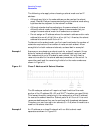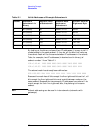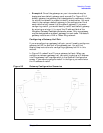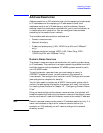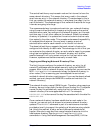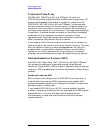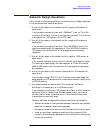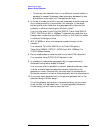
Chapter 2 35
Networking Concepts
Address Resolution
Address Resolution
Address resolution in NS networks refers to the mapping of node names
to IP addresses and the mapping of IP addresses to lower level
addresses (such as an X.25 address or a station address). Several
address resolution methods are available for you to use individually or
in combination with each other. You can configure these methods
according to the needs of your network.
The available address resolution methods are:
• Domain name services.
• Network directory.
• Probe (and probe proxy) (LAN, 100VG-AnyLAN, and 100Base-T
only).
• Address resolution protocol (ARP) (LAN, Token Ring, FDDI,
100VG-AnyLAN, and 100Base-T only).
Domain Name Services
The domain name services are a mechanism for resolving node names
to IP addresses. They conform to an open networking standard and will
facilitate communications between HP e3000 systems as well as with
non-HP e3000 nodes.
To use the domain name services, you must assign a name, in
ARPANET standard format, to each system on the network or
internetwork. You configure this name on the NS Configuration screen
(see configuration chapters for details).
You will also need to create a set of ASCII files on each system which
contain the addressing information the system will need. Instructions
for creating these files are in Chapter 12 , “Configuring Domain Name
Files.”
Once you have configured the domain name services, the network will
be able to access the node using its domain name and the domain name
service routines will resolve the domain name to the node’s IP address.
NOTE
Domain name services provide name to IP address resolution only. If a
lower level address is required for network communication (for
example, an X.25 address) you will need to configure the network
directory as well.




